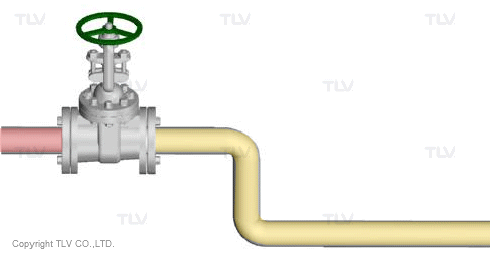Importance of Identifying Causes and Locations
Water hammer is a technical phenomenon that can seriously impact the performance and safety of industrial pipeline systems. Identifying not only the location and timing of the water hammer but also analyzing its causes is an extremely important factor.
Causes of Water Hammer
When the pump is operating normally and there is a sudden power loss, the pressure inside the pipe increases rapidly. Extremely large shockwaves are generated, affecting the entire system and the shut-off valves. This phenomenon originates from three stages: the normal operating phase of the pump, the power loss phase, and the impact of reverse pressure, ultimately leading to pump failure.
In some cases, water hammer still occurs even when the valve has been closed or operated slowly. This often happens due to the sudden condensation of steam, triggered by water waves. These waves can isolate or trap air pockets, increasing the potential for water hammer. Specifically:
Water hammer stops after the valve is closed

Water hammer continues even when the valve is closed

Water hammer is formed by water waves

Waves form but condensate level is low: no water hammer

High condensate level but no waves: no water hammer

Waves and high condensate level: water hammer exists

Measures to Identify Locations Where Water Hammer Commonly Occurs
Specific location identification measures include:
- Measures for steam distribution lines.
- Measures for equipment.
- Measures for condensate transportation pipelines.
By clearly understanding the causes and potential locations of water hammer events, it is possible to implement solutions that both protect infrastructure and ensure safety.

 Tiếng Việt
Tiếng Việt




